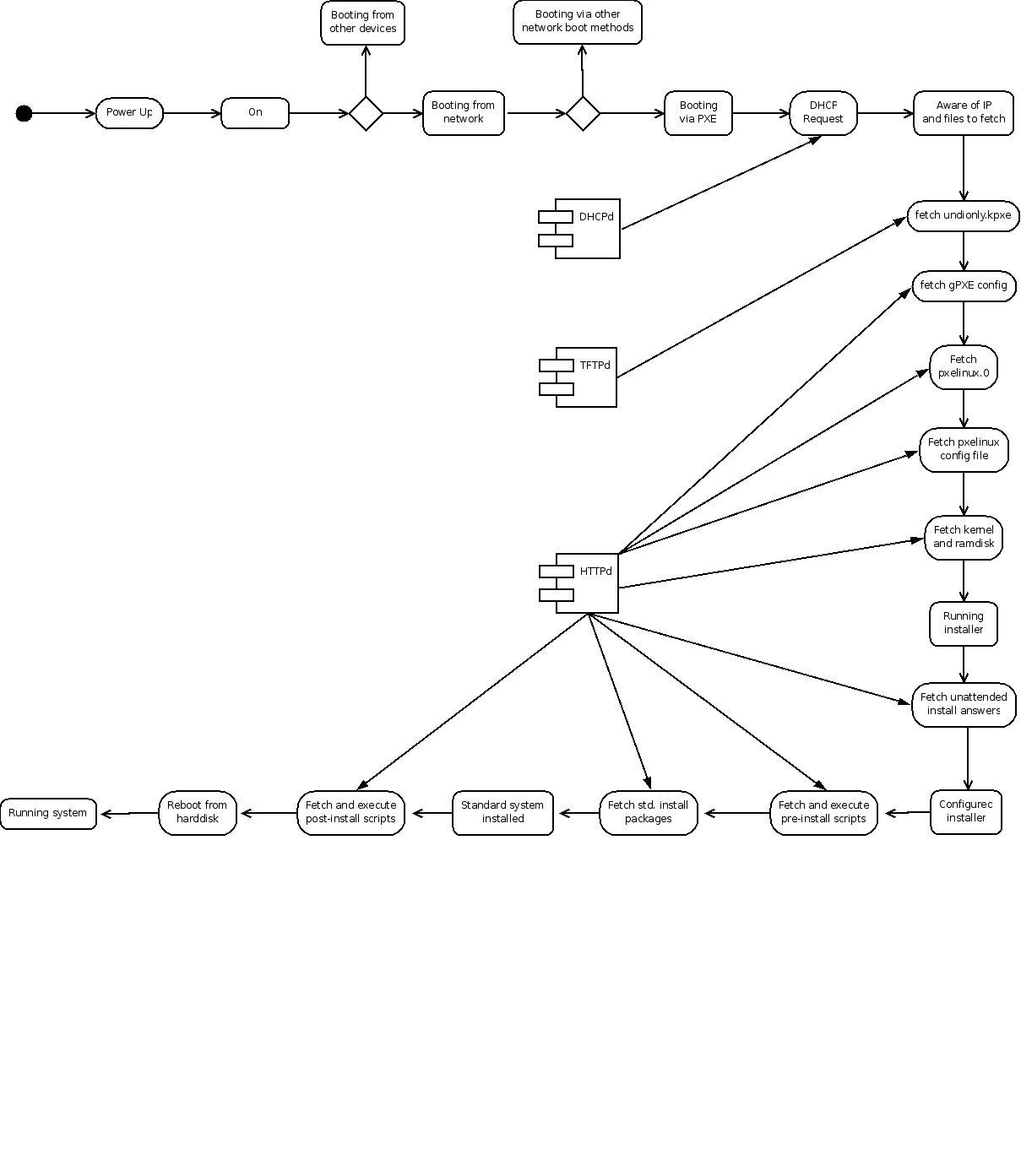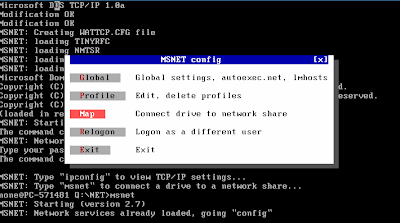

- #Windows xp pxelinux install#
- #Windows xp pxelinux update#
- #Windows xp pxelinux iso#
- #Windows xp pxelinux zip#
- #Windows xp pxelinux download#
Wdsutil /set-server /N12bootprogram:boot\x86\ /architecture:x86 Wdsutil /set-server /bootprogram:boot\x86\ /architecture:x86
#Windows xp pxelinux zip#
This is a little bit of messing around and the most annoying part of the whole install!įrom the sysLinux 3.86 zip file, extract: Once you have a copy of sysLinux 3.86, extract it all to a temp folder, and we need to move a few files around.
#Windows xp pxelinux download#
Do NOT download anything newer than 3.86 as it won’t work with ESXi as their installer is still based on 3.86. It needs to be able to deliver Linux-based images as well, so the first thing to do is to change the WDS boot loader to a Linux PXE-based one.

Change the Windows Deployment Services boot loaderĪt this point, the WDS server is ready to deploy Windows images, but we want it to do more than that.

It’s good to test at this point just to make sure that everything works because from here we start to make some changes to the fundamentals of WDS which will allow it to provide both Linux and ESXi installs. You should be able to PXE boot a VM and get the standard Windows-only WDS boot screen.
#Windows xp pxelinux iso#
Grab a “boot.wim” and “install.wim” from a Windows 2016 ISO and you’re good to go with WDS deploying Windows images. The last option to change is on the PXE menu, for that you’ll have to launch the WDS deployment console and right-click on the server name and change the option under the boot tab from “Require the user to press F12 key to continue the PXE boot” to “Always continue the PXE boot.” I change the C:\RemoteInstall to E:\RemoteInstall – E: being the second drive that I add to the WDS server specifically for WIM files, Linux files and so on.Īs above, I like my PXE server to respond to all requests as it just saves having to approve things in AD. You can integrate this server with AD, as at this point we are configuring the Windows options, but I prefer a standalone server that responds to all requests and doesn’t need AD pre-staging. There are a few minor changes I like to make to the setup. On the WDS server, launch the configuration wizard and finish up the WDS configuration. The other three options are pretty standard for most DHCP setups. The “Bootfile Name” is the WDS executable that we want the client to run. The “Boot Server Host Name” is the IP address of the WDS server.

#Windows xp pxelinux update#
If you like, you can add a second NIC to this server and have a dedicated network built off it, but personally, I like to be able to build my servers on the main network anyway, so I prefer to update the central DHCP server with the additional WDS DHCP attributes: Now that we have the basic Windows Deployment Services server installed, we need to make some changes to the DHCP pool. Install-Windowsfeature –name WDS -includemanagementtools Install-WindowsFeature –name Web-server -includemanagementtools This can be done either via the server manager tool, or if you like, the PowerShell approach. The server will need WDS and IIS to be installed. The installation and configuration have several steps: Setup the WDS Server
#Windows xp pxelinux install#
Taking a clean Windows server, I like to provide a 60GB C: drive for the OS and a 300GB WDS drive for the various WIM files for deployment of Windows and for the Linux install files. There is no reason that others couldn’t be used. I’ll be focusing on those three operating systems as I go through this article. The WDS setup I currently use builds Windows, CentOS and ESXi. Once done, a menu entry is created to allow the Linux PXE boot menu to hand over to Windows for Windows builds, and IIS is used to provide a web interface for downloading the Linux config files. Essentially, the PXE boot loader used by Windows needs to be swapped out for a Linux one. To configure WDS to be able to deploy Windows and Linux systems requires some command line changes. Out of the box, it’s able to deploy Windows VMs, and with a couple of small tweaks, it’s possible to have WDS build Linux and VMware servers, all from a selectable Preboot eXecution Environment (PXE) boot menu. Windows Deployment Services (WDS) is a great addition to the Windows product set.


 0 kommentar(er)
0 kommentar(er)
